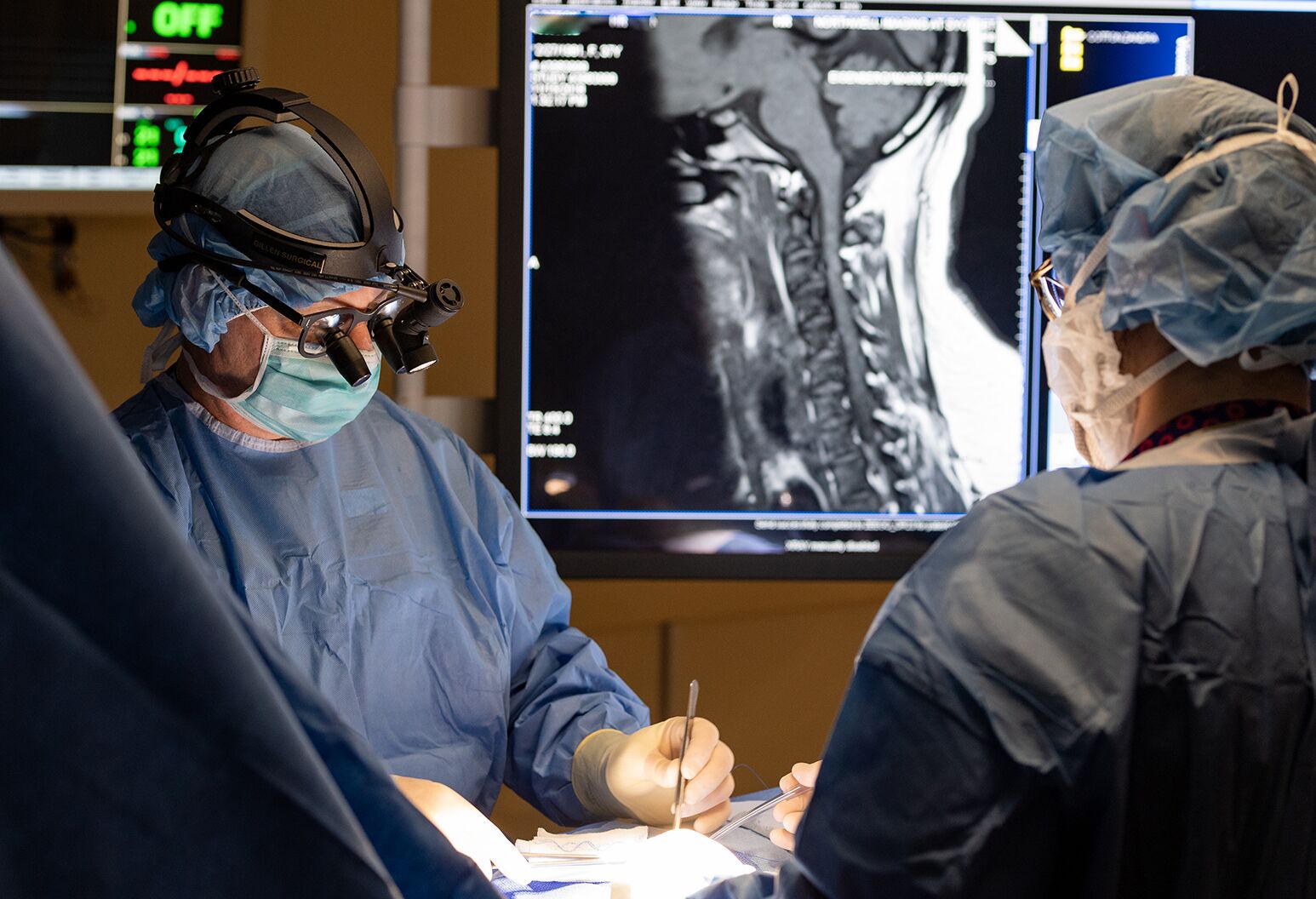A Summary of Spine Problems That Usually Result in Surgical Therapies
Spine conditions such as herniated discs, spine stenosis, and degenerative disc disease often require surgical treatments when conservative therapies fall short to relieve consistent signs. These conditions not only result in significant discomfort but can also seriously impair everyday performance and general lifestyle. Recognizing the subtleties of each problem and the matching medical options, such as discectomy or spinal fusion, is essential for reliable management. As we check out these conditions better, it comes to be apparent that the decision-making process bordering surgical therapy is diverse and warrants careful factor to consider.
Herniated Discs
Although several individuals with herniated discs may locate relief via traditional therapies, surgical treatment ends up being a required factor to consider when signs and symptoms continue or worsen - best spine surgeons in st louis mo. A herniated disc happens when the soft internal gel of a back disc extends through its outer layer, possibly pressing neighboring nerves and leading to discomfort, pins and needles, or weakness in the extremities
Conventional administration commonly consists of physical treatment, pain medications, and corticosteroid shots, which aim to lower inflammation and improve feature. In situations where these techniques fail to reduce incapacitating signs, surgical alternatives may be checked out.
The most common medical procedure for herniated discs is a discectomy, which entails the removal of the herniated section of the disc to ease stress on the affected nerve root. In more extreme cases, spinal blend may be necessary to support the impacted vertebrae.
Individuals are advised to talk about the potential risks and advantages of surgical procedure with their medical care copyright to make an educated decision. Inevitably, the objective of any kind of medical treatment is to recover feature, minimize discomfort, and boost total lifestyle for individuals suffering from herniated discs.
Back Stenosis
Spinal constriction occurs when the rooms within the spine narrow, resulting in increased stress on the spine and nerves. This condition can develop in different regions of the spinal column, including the cervical and lumbar locations, frequently as a result of age-related modifications, such as degenerative disc illness, joint inflammation, or enlarging of ligaments.
Patients with spine stenosis might provide with symptoms that include pain, numbness, prickling, or weak point, largely in the arms or legs. These signs and symptoms can be aggravated by activities that entail standing or walking, usually leading people to seek alleviation through conservative treatments like physical therapy, medications, or epidural steroid shots.
Nonetheless, when these non-surgical interventions fall short to provide adequate relief, medical options might be taken into consideration. Common operations for spinal stenosis include laminectomy, which involves the removal of part of the vertebra to minimize pressure, and back combination, which maintains the afflicted area. The decision to go after surgical procedure is commonly based upon the severity of symptoms, the level of practical problems, and the overall health of the client. Motivate diagnosis and monitoring are vital to avoid more neurological concession and improve lifestyle.
Spondylolisthesis
Spondylolisthesis takes place when one vertebra slides onward over another, resulting in misalignment of the spinal column. This problem can result from different factors, consisting of hereditary flaws, trauma, or degenerative modifications in the spinal column. It is most commonly observed in the lumbar region, especially at the L4-L5 and L5-S1 degrees.

Therapy options vary based on the seriousness of the slippage and the signs and symptoms offered. Conventional measures, consisting of physical treatment, pain management, and activity modification, are often the very first line of defense. Nonetheless, when non-surgical techniques fail to ease symptoms or when substantial nerve compression is present, surgical treatment may be warranted. Surgical choices can include back combination or decompression treatments, targeted at recovering positioning and easing neurological signs. Early diagnosis and ideal administration are crucial for ideal results in individuals with spondylolisthesis.
Degenerative Disc Disease

The problem can be detected via a combination of clinical assessment, imaging research studies, and individual history. When these approaches fall short to offer appropriate alleviation, medical interventions may be thought about.
Surgical choices for DDD may include back fusion or man-made disc replacement, targeted at supporting the impacted sector and relieving discomfort (best check my site spine surgeons in st louis mo). Ultimately, the option of treatment is embellished, taking into consideration the seriousness of the problem, individual health, and way of life elements
Spine Tumors

Spine lumps can arise from numerous variables, including genetic proneness, ecological impacts, and pre-existing clinical conditions. People might provide with a range of symptoms, including local pain, neurological shortages, weak point, or changes in bowel and bladder function, depending on the tumor's size and area.
Medical diagnosis generally involves imaging research studies such as MRI or CT checks, which aid delineate the growth's qualities and influence on bordering structures. In evaluating therapy alternatives, the tumor's location, type, and quality are crucial considerations. Surgical treatment might be warranted to ease signs, Resources acquire a biopsy, or get rid of the lump entirely. The objective of surgical treatment is usually to decompress neural elements and support the spine. Adjuvant treatments, consisting of radiation or chemotherapy, might additionally be necessary depending upon the growth's nature. Early detection and treatment are essential for enhancing outcomes in individuals with spinal lumps.
Conclusion
In summary, back conditions such as herniated discs, back stenosis, spondylolisthesis, degenerative disc disease, and spine tumors frequently necessitate medical intervention as a result of their prospective to trigger considerable discomfort and functional disability. While conservative therapies may supply momentary alleviation, surgical options come to be crucial when signs and symptoms persist or intensify. Timely medical diagnosis and treatment play an essential duty in restoring function and boosting the lifestyle for afflicted people, emphasizing the significance of extensive spine treatment.
